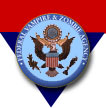

Famous Cases | Historical Tales | Vampires | Zombies
 |  |
Famous Cases | Historical Tales | Vampires | Zombies |
Horror stories may be the place for vampires, ghosts and zombies. Just remember, they are not real, warns physicist Costas Efthimiou.
Obviously, you might say.
But Efthimiou, a professor at the University of Central Florida, points to surveys that show American gullibility for the supernatural.
Using science and math, Efthimiou explains why it is ghosts cannot walk among us while also gliding through walls, like Patrick Swayze in the movie Ghost. That violates Newton's law of action and reaction. If ghosts walk, their feet apply force to the floor, but if they go through walls they are without substance, the professor says.
"So which is it? Are ghosts material or material-less?" he asks.
Zombies and vampires fare even worse under Efthimiou's sceptical microscope.
Efthimiou looked at the most prominent child-turned-zombie case that zombie aficionados cite: the 1989 case of a Haitian 17-year-old who was declared dead and then rose from the grave a day after the funeral and was considered a zombie. The boy, who never died but was paralysed and could not communicate, had been poisoned with toxins from a relative of the deadly Japanese puffer fish, later research showed.
Efthimiou takes out the calculator to prove that if a vampire sucked one person's blood each month - turning each victim into an equally hungry vampire - after a couple of years there would be no people left, just vampires. He started his calculations with just one vampire and 537 million humans on January 1, 1600, and shows that the human population would be down to zero by July 1602.
All this may seem obvious, but to Efthimiou and other scientists, the public often is not as sceptical as you might think. Efthimiou points to National Science Foundation reports showing widespread belief in pseudo-sciences - such as vampires, astrology and ESP.
More than one in three Americans believe houses can be haunted, a 2005 Gallup poll showed. More than 20 percent of Americans believe in witches and that people can communicate with the dead. TV shows such as "Medium" and "Ghost Whisperer" are popular.
"We're talking about a large fraction of the public that believes in subjects that scientists believe are out of the question," said Efthimiou. His paper is in an archive awaiting publication either in the journal Physics Education or the magazine Sceptical Inquirer, he said.
University of Maryland physics professor Bob Park, author of the book Voodoo Science, said scientists have to keep telling the public what seems all-too-obvious.
"There are things that we need to point out that are crap," Park said.
It has gotten so bad, Park has a hard time watching movies these days. Not Efthimiou, who liked the horror movie The Ring.
"I have nothing against movies," he said. "I have nothing against people who like them, as long as they don't mix reality with fiction."
And Halloween? Both physicists will suspend disbelief when vampires, ghosts and zombies come to their doors on October 31, Halloween Day.
"I give them candy and I feign fright," Park said. "They enjoy it, what the hell. The problem is the ones that never get over it."
Comments from Dr. Pecos: As stated elsewhere on this site, vampires form small packs for hunting. Once the pack is at its optimal size (usually four or five members), then vampires will destroy their prey after feeding. There are two reasons for this: one, this ensures less competition for blood; and two, it reduces the chances of detection. Vampires are quite proficient at covering their tracks, and they can go for a considerable amount of time without feeding. They can even enter a dormant state for years at a time. If this Mr. Efthimiou had done his homework, he would understand that not only are vampires mathematically possible, they are real.